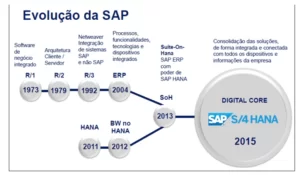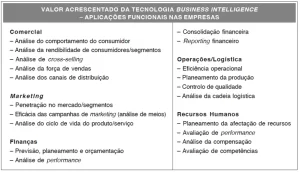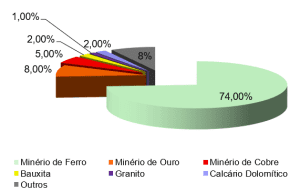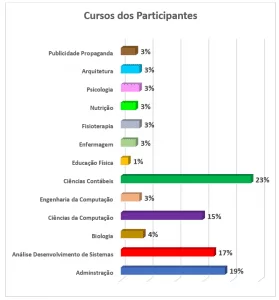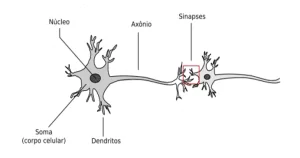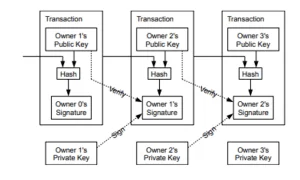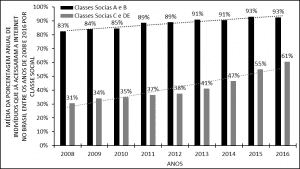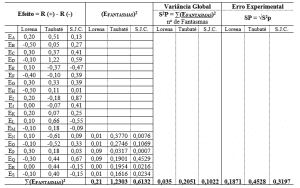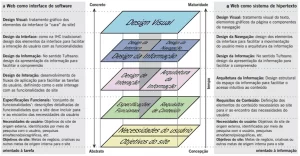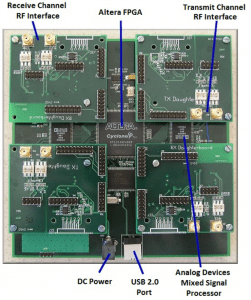BIBLIOMETRIC REVIEW
FERREIRA JUNIOR, Cidrak Nunes [1], REDKVA, Paulo Eduardo [2], SANDRINO, Bianca [3]
FERREIRA JUNIOR, Cidrak Nunes. REDKVA, Paulo Eduardo. SANDRINO, Bianca. Semiconductors in the Digital Age: Evolution, Challenges, and Geopolitical Implications. Revista Científica Multidisciplinar Núcleo do Conhecimento. Year 08, Ed. 12, Vol. 02, pp. 133-150. December 2023. ISSN: 2448-0959, Acess link: https://www.nucleodoconhecimento.com.br/technology-en/semiconductors, DOI: 10.32749/nucleodoconhecimento.com.br/technology-en/semiconductors
ABSTRACT
Semiconductor Industry, the Foundation of the Contemporary Technological Revolution, has been continuously evolving from the early transistors to today’s advanced microchips. Historically dominated by powers such as the United States, the last decade has witnessed the rise of Asia, especially China, as a vital center for production and research, reshaping the geopolitical balance of the sector. Driven by the growing demand for electronic devices and digitization, the industry faces challenges such as the recent chip shortage, exacerbated by the COVID-19 pandemic. However, emerging technologies like tunnel gate transistors, graphene, and resistive memory promise to further revolutionize the field. This narrative review provides a comprehensive analysis of the evolution of semiconductors, highlighting technological innovations, current challenges, and geopolitical implications, with a special focus on the intersection between economy and technology.
Keywords: Semiconductors, Technological Evolution, Geopolitical Implications, Emerging Innovations.
1. INTRODUCTION
The semiconductor industry has played a crucial role in the technological revolution of recent decades, from the early transistors to today’s advanced microchips (Deng, 2022; Hossain et al., 2023). This evolution not only reflects technological advancements but also the geopolitical and economic dynamics shaping the global landscape (Da Silva, 2022).
Historically, the semiconductor industry has been dominated by a few global players, with the United States leading in terms of innovation and production (Danowitz et al., 2012; Deng, 2022; Hossain et al., 2023; Da Silva, 2022). However, in recent decades, Asia, particularly China, has emerged as a crucial center for semiconductor production and research, challenging traditional hegemony and reshaping the balance of power in the industry. China has experienced significant growth in its semiconductor industry, focusing on supply chain development and technological capabilities improvement (Ernst, 2016; Li, 2021; Wu et al., 2006).
The increasing demand for electronic devices, driven by digitization and the Internet of Things (IoT), has placed semiconductors at the forefront (Roche, 2018). In recent years, there have been major shifts in the hardware paradigm of the Information and Communication Technology (ICT) industry, with the user-device relationship inverting, and devices outnumbering users (Hischier et al., 2015; Zou, 2023). Advances in semiconductor technology have been propelled by the demand for faster, better, and more energy-efficient devices (Fowler, 1993). Progress in physical, chemical, and materials sciences, along with the development of new technological tools, has enabled the integration of hundreds of thousands of devices on a single chip (Jevtics et al., 2021). Semiconductors have played a significant role in the era of microelectronics, with constantly improved performances achieved through a better understanding of physical processes and technological advancements.
However, the semiconductor industry is not without challenges. The recent chip shortage, exacerbated by the COVID-19 pandemic, has highlighted the fragility of global supply chains and the need for diversification (Frederico et al., 2023; Mzougui et al., 2023; Wang et al., 2023). In this context, it becomes important to understand the trajectory of the semiconductor industry, its current and future challenges, as well as the geopolitical implications and industrial policies adopted by different nations. The aim of this review is to comprehensively analyze the sector, addressing its historical evolution, technological innovations, current challenges, geopolitical implications, and industrial policies, with an emphasis on the intersection of economy and technology.
2. METHODOLOGY
This is a narrative review that involved the exploration of relevant articles and academic texts in recognized academic databases. We employed a broad range of specific search terms related to the semiconductor industry, encompassing historical context, technological innovations, current challenges, geopolitical implications, and industrial policies.
Initially, we identified numerous articles matching the search terms. After this initial step, we proceeded with an initial screening based on inclusion and exclusion criteria. Inclusion criteria required that articles or texts be available in English or Portuguese and specifically address various aspects of the semiconductor industry. Articles that were not directly related to the topic or did not provide relevant information for the review were excluded.
During this analysis, we considered the relevance of each article to the objectives of this review. Additionally, we evaluated the methodology adopted by the authors, examined key findings, and conclusions presented in each study. This critical analysis allowed us to identify trends, challenges, and opportunities in the semiconductor industry, as well as to understand the geopolitical implications and industrial policies adopted by different nations. We structured this review into thematic sections reflecting the main topics identified during the analysis of selected articles. Each section was developed based on the evidence found in the selected works.
It is important to acknowledge the limitations of this narrative review. The selection of articles and academic texts was based on criteria established by the authors, which may have excluded some research with other important contexts. Furthermore, the review primarily focuses on articles published in English and Portuguese, potentially limiting the geographical scope of the analysis. These limitations should be taken into consideration when interpreting the results of this review.
3. DEVELOPMENT
3.1. EMERGING TECHNOLOGIES IN SEMICONDUCTORS: PERSPECTIVES AND ADVANCES
One of the most promising emerging technologies is that of Tunnel Field-Effect Transistors (TFETs), which have the potential to surpass the limits of conventional MOSFET transistors in terms of power consumption (Deng; Deng, 2022). Simultaneously, two-dimensional materials, such as graphene, are being extensively explored due to their exceptional properties, opening new frontiers for the semiconductor industry (Kai; Fujishima, 2011).
Resistive Random-Access Memory (ReRAM) is another significant innovation promising to overcome the limitations of traditional memory technologies. With higher density and lower energy consumption, ReRAM has the potential to revolutionize data storage (Yu; Chen, 2016). In contrast, silicon photonics, which uses light instead of electrons to transmit information, is emerging as a promising solution to overcome the bandwidth and energy consumption challenges of conventional electronic systems (Hirayama et al., 2007).
Quantum computing, still in its early stages, represents a potentially revolutionary advancement. By exploring the quantum properties of materials, quantum computers have the potential to solve problems that are intractable for classical computers (Sengupta; Ankit; Roy, 2017). Emerging semiconductor technologies are expanding their applications across various fields. These technologies enable the development of low-cost semiconductor devices with advanced functions, from medicine to Information and Communication Technology (ICT) (Kai; Fujishima, 2011).
Semiconductor heterostructures have been the focus of extensive research, aiming to drive significant advances in nanoscale detection and the study of quantum transport properties, as mentioned by Hirayama et al. (2007). These semiconductor structures, composed of layers of different semiconductor materials, offer a promising field to explore phenomena on extremely small scales. Additionally, new technological frontiers are emerging, such as wide-bandgap semiconductors, whose revolutionary potential for power electronic systems was highlighted by Shenai in (1990). These semiconductors, with their unique properties, have the power to fundamentally transform how we conceive and implement high-power electronics systems, paving the way for innovations that can shape the future of electrical technology. Portable spectroscopy is a rapidly growing field, enabling the incorporation of multispectral sensors into wearable devices, providing valuable information to users (Pescitelli et al., 2023). The reliability of power electronic converters is crucial for miniaturized electronic devices. Innovative solutions are being proposed to address the challenges of power electronic components and circuits (Crocombe, 2023).
The semiconductor sector has witnessed various milestones and historical advancements. These advances have been fundamental to the continuous growth of the industry, paving the way for the creation of various products, from embedded devices to smartphones and computers (Chin et al., 2013; Lee, 2016). This segment has played an essential role in the current technological revolution. Primarily driven by the advancement in chip miniaturization, Moore’s Law, predicting the doubling of the number of transistors on a microchip approximately every two years, has been the norm in the semiconductor industry for decades (Deng; Deng, 2022). This continuous miniaturization has allowed for an exponential increase in processing power, resulting in faster, smaller, and more energy-efficient electronic devices (Araújo, 2022).
The consolidation of multiple capabilities into a single component, known as System on a Chip (SoC), has been crucial for the evolution of mobile devices, wearables, and other compact technologies that stand out in the current landscape (Mok et al., 2021; Du et al., 2023; Patrick et al., 2022). This convergence has enabled the accelerated incorporation of innovations, such as 5G technology, while simultaneously maintaining energy efficiency and economic accessibility (Guertin, 2018). Each year, SoCs are refined and integrated into more sophisticated systems, reflecting the constant miniaturization of technology (An et al., 2021). The chiplet-based design strategy, combining various chiplets with distinct functions into a single structure, has brought an additional revolution to the industry, resulting in more compact, energy-efficient SoCs with agile market release times. Such advances in SoC technology have enabled the creation of small yet robust devices that meet the demands of the contemporary consumer.
To overcome the limits of miniaturization, the industry has explored new materials and manufacturing techniques. In brain research, brain chips, such as RFID chips, have been used to study neurodegenerative diseases like Alzheimer’s. Recent studies have cultivated brain organoids around functional RFID chips, which can stimulate neuron growth and enhance connectivity, potentially improving memory in Alzheimer’s patients (Jones et al., 2023). Another notable innovation is the development of Brain-On-a-Chip (BOC) microfluidic devices. These devices allow experiments using human tissues and can be used to screen new drugs (Zhao et al., 2023). Additionally, advances in chip miniaturization have led to the development of brainoids, self-assembled brain models using pluripotent stem cells derived from humans (Akcay; Luttge, 2023).
Thus, the semiconductor industry continues to innovate at an accelerated pace, driven by the relentless demand for increased performance and efficiency. Technological innovations, such as brain chips and advances in miniaturization, are at the heart of this transformation, shaping the future of electronics and opening new frontiers for computing.
3.2. CHALLENGES AND PROSPECTS IN THE SEMICONDUCTOR INDUSTRY
The semiconductor sector faces various challenges. The current semiconductor shortage, affecting industries from automotive to electronics, is driven by supply chain disruptions due to the COVID-19 pandemic, increased demand for electronics, and production constraints (Araújo, 2022; Deng; Deng, 2022). Sustainability is another growing concern. Semiconductor production is energy and resource-intensive. Pressure for more sustainable practices is leading the industry to seek eco-friendly materials and production techniques, minimizing waste. Additionally, the industry faces challenges such as rising costs, the need for process development and manufacturing expenses, and product cycle reduction (Abadir, 2007).
We are witnessing the emergence of new materials, techniques, and computing paradigms, such as quantum computing, to enhance the performance and efficiency of semiconductor developments (Beckers et al., 2022; Deng; Deng, 2022). The increasing complexity of chips demands more advanced design tools and a systematic approach to verification and testing. Furthermore, the demand for semiconductor experts is outpacing the supply, highlighting the need for continuous investment in education and training (Meloni, 2023). In response to these challenges, the industry is adapting business models, developing new technologies, and addressing environmental issues. Collaboration between industry, academia, and governments is essential to overcome these obstacles and ensure a sustainable and innovative future for the semiconductor industry (Cremonesi, 2010; Law, 2019; Plepys, 2004).
The semiconductor field is at the epicenter of significant geopolitical tensions while facing technical and logistical challenges. The growing global dependence on advanced technologies has made semiconductors strategic assets, with nations competing for supremacy in this relevant area (Deng; Deng, 2022; Hossain et al., 2023). The United States, traditionally leaders in the semiconductor industry, face international competition and supply chain security concerns due to offshoring manufacturing operations. Calls to revitalize domestic manufacturing and invest in research and development are evidence of the need to maintain the technological advantage of the U.S. Apart from tensions between the U.S. and China, other countries like Taiwan and South Korea play crucial roles in the global supply chain, becoming focal points of strategic interest and potential sources of geopolitical tension (Luo; Van Assche, 2023).
In summary, the geopolitical implications of the semiconductor industry are profound and multifaceted. As technology plays a central role in global economies, tensions and competitions around semiconductors intensify. This dynamic is evident in the U.S.’s techno-nationalism policies, Europe’s response with the European Chips Act, and the strategic concentration of semiconductor production in major companies and countries (Huggins et al., 2023). For multinational corporations, adapting to these changes requires geographic strategies, operations reconfiguration, resilience, and corporate diplomacy to navigate an uncertain landscape.
3.3. INDUSTRIAL POLICIES AND COMPETITIVENESS IN THE SEMICONDUCTOR INDUSTRY: GLOBAL APPROACHES AND FUTURE CHALLENGES
In addition to the United States and China, other countries have also recognized the strategic importance of semiconductors and implemented their own industrial policies. For example, the European Union has launched initiatives to increase semiconductor production in the region and reduce its dependence on Asian suppliers (Johnston; Huggins, 2023). Similarly, countries like South Korea and Taiwan, already established as key players in the industry, continue to invest in innovation and capacity expansion to maintain their competitive position. However, while these industrial policies have the potential to drive semiconductor industry development, they may also lead to trade tensions. Export restrictions, subsidies, and other protectionist measures can distort the global market and result in trade disputes between nations (Deng; Deng, 2022). Therefore, it is essential that policies are implemented to promote cooperation and global integration rather than isolationism and unrestrained competition (Araújo, 2022).
Industrial policies for semiconductors vary among different countries. The United States, Taiwan, Japan, and Germany have excess engineer outputs, while China and South Korea have excess flows (Fujiwara, 2023). The European Union is providing significant investments in the semiconductor industry to address issues of self-sufficiency and digital sovereignty (Johnston; Huggins, 2023). China has adopted different developmental state models for its semiconductor industry, including an entrepreneurial state model in the 1980s and 1990s and a general developmental state model with indirect incentives in the 2000s (Marukawa, 2023). China’s recent industrial policy focuses on revitalizing its ICT industry through direct investments in national champions and diversification among more than 300 companies (Verwey, 2019). However, China’s current semiconductor industrial plans face challenges due to a lack of human capital and intense international competition (Verwey, 2019).
In China, industrial policy related to semiconductors has gone through various phases, from prioritizing economic growth and the development of national champions to the use of indirect incentives and promoting integrated circuit industry growth (Majerowicz; De Medeiros, 2018; Marukawa, 2023). China’s recent industrial policy is focused on revitalizing the ICT industry through direct and indirect investments (Marukawa, 2023).
During the global financial crisis of 2008, countries like Japan, South Korea, and Taiwan responded with government interventions to support the semiconductor industry, resulting in financial improvements, albeit with some delay (Wu et al., 2015). In Europe, technology policies and collaborations, such as research and development consortia, have been adopted to enhance the competitiveness of the semiconductor industry and address foreign competition (Lucchini, 1998). In the United States and Japan, the debate revolves around industrial policies, technology importation policies, and support for research consortia, with analyses on how these policies impacted the development and competitiveness of the semiconductor industry (Lynn, 2000). The challenge is to avoid trade tensions and ensure a sustainable future for this vital industry (Verwey, 2019; Wang et al., 2023).
Currently, significant challenges related to sustainable management are being faced, with the need to reduce Greenhouse Gas (GHG) emissions being a major concern (Zhu et al., 2023). This industry plays a notable role in GHG emissions; however, clear guidelines for effective reduction methods, especially tailored to the complex semiconductor manufacturing operations, are currently lacking (Zhu et al., 2023). A promising approach to address this issue involves the implementation of highly efficient exhaust gas destruction equipment designed to remove GHGs from critical processes. This strategy could represent a significant advancement in the pursuit of environmental responsibility in the semiconductor industry.
Furthermore, the concept of Green Supply Chain Management (GSCM) has been widely applied to improve environmental performance in semiconductor supply chains (Lu et al., 2023). However, a study found that when analyzing environmental variables in relation to productivity, no significant differences were observed, suggesting that perhaps investment in technology development is a more predominant factor for productivity improvement (Lu et al., 2023).
Ultimately, environmental balance in the semiconductor industry is not solely about reducing Greenhouse Gas (GHG) emissions and implementing GSCM. The competitiveness and long-term growth of the sector are also intrinsically linked to its innovation capability and the ability to engage in open innovation processes (Kumar; Kumar, 2017). Therefore, promoting innovation becomes crucial to ensure long-term competitiveness in this dynamic industry. Addressing environmental responsibility in the semiconductor industry involves a multifaceted approach, including reducing GHG emissions, implementing Green Supply Chain Management practices, and encouraging innovation to ensure long-term social sustainability (Huggins et al., 2023).
Various considerations are observed in performance, reporting practices, the adoption of a sustainability-focused Balanced Scorecard (BS) framework, a focus on environmental preservation throughout product life cycles, the implementation of environmental design principles, and the persistent pursuit of reducing the overall life cycle impact (Jassem; Azmi; Zakaria, 2018). Within this industry, organizations have dedicated efforts to assess their viability based on criteria involving resource management, emission data, and the adoption of sustainable best practices (Kumar et al., 2021). In this approach, metrics such as profitability, innovation, investments in sustainable practices, and the promotion of awareness about the importance of environmental preservation emerge as elements of great significance (Hsu et al., 2011). Concerns about environmental sustainability stand out as a significant priority in the development of new manufacturing processes, facilities, and products, emphasizing the need for in-depth research and collaboration in the field (Harland; Reichelt; Yao, 2008).
In this regard, substantial efforts have been made in incorporating environmental principles into design, contributing to notable progress in reducing greenhouse gas emissions, waste management, and efficient energy use. Nevertheless, significant challenges persist regarding the ongoing pursuit of further environmental impact reduction.
4. FINAL CONSIDERATIONS
The semiconductor industry has played a fundamental role in the technological revolution of recent decades, influencing not only the advancement of technologies but also global geopolitical and economic dynamics. From its origins with the first transistors to the highly complex microchips we have today, the trajectory of this industry reflects a unique combination of innovation, competition, and global-scale collaboration. Historically dominated by a few giants, with the United States at the forefront, we have witnessed the rise of Asia, notably China, as a significant hub for semiconductor production and research. This geopolitical transformation, coupled with the growing demand for electronic devices and the era of digitization, places semiconductors at the forefront of attention. Emerging technologies such as tunnel field-effect transistors, two-dimensional materials like graphene, resistive memory, and silicon photonics promise to further revolutionize the industry. However, recent challenges, such as chip shortages and the vulnerability of global supply chains, highlight the urgent need for diversification and continuous innovation.
REFERENCES
ABADIR, Magdy S. Meeting the evolving challenges of the semiconductor industry. In: 2007 International Conference on Design & Technology of Integrated Systems in Nanoscale Era. IEEE, 2007. p. I-I.
AKCAY, Gulden; LUTTGE, Regina. Microenvironments Matter: Advances in Brain-on-Chip. Biosensors, v. 13, n. 5, p. 551, 2023.
AN, Xiaoshuai et al. Compact integration of GaN-based photonic chip with microfluidics system. Optics Letters, v. 46, n. 2, p. 170-173, 2021.
ARAÚJO, Theodoro Parizzi Horta. ESCASSEZ MUNDIAL DE SEMICONDUTORES: OS IMPACTOS NA ECONOMIA BRASILEIRA. 2022.
BECKERS, Omar et al. Perspective on the application of continuous flow chemistry for polymer-based organic electronics. Journal of Materials Chemistry C, v. 10, n. 5, p. 1606-1616, 2022.
CHIN, Jiann Min et al. Recent advances in fault isolation for semiconductor industry. In: Proceedings of the 20th IEEE International Symposium on the Physical and Failure Analysis of Integrated Circuits (IPFA). IEEE, 2013. p. 269-279.
CREMONESI, Alessandro. Semiconductor industry: Perspective, evolution and challenges. In: 2010 Fourth ACM/IEEE International Symposium on Networks-on-Chip. IEEE, 2010. p. 5-5.
CROCOMBE, Richard A. Emerging technologies for miniature spectrometers and multispectral sensors. Next-Generation Spectroscopic Technologies XV, v. 12516, p. 35-48, 2023.
DA SILVA, Guilherme Jorge. Semicondutores: um estudo para a China e Estados Unidos nas cadeias globais de valor. Textos de Economia, v. 25, n. 2, p. 01-28, 2022.
DANOWITZ, Andrew et al. CPU DB: Recording Microprocessor History: With this open database, you can mine microprocessor trends over the past 40 years. Queue, v. 10, n. 4, p. 10-27, 2012.
DENG, Ben Lian; DENG, Ben Shen. POLITICAL ECONOMY OF THE SEMICONDUCTOR INDUSTRY AND THE RECENT LIMITED DEVELOPMENT OF THE PEOPLE’S REPUBLIC OF CHINA. Revista de Economia Contemporânea, v. 26, 2022.
DU, Xu et al. Integration of Microfluidic Chip and Probe with a Dual Pump System for Measurement of Single Cells Transient Response. Micromachines, v. 14, n. 6, p. 1210, 2023.
ERNST, Dieter. From Catching Up to Forging Ahead? China’s New Role in the Semiconductor Industry. Solid state technology May, 2016.
FOWLER, Alan B. A semicentury of semiconductors. Physics Today, v. 46, n. 10, p. 59-62, 1993.
FREDERICO, Guilherme F. et al. Guest editorial: Performance measurement in supply chains during disruptions: lessons from the COVID-19 pandemic. International Journal of Quality & Reliability Management, v. 40, n. 5, p. 1113-1118, 2023.
FUJIWARA, Ayano. An empirical analysis of the impact of semiconductor engineer characteristics on outflows and inflows: evidence from six major semiconductor countries. SN Business & Economics, v. 3, n. 6, p. 100, 2023.
GUERTIN, Steven M. Guideline for Single-Event Effect (SEE) testing of System on a Chip (SOC) devices. 2018.
HARLAND, John; REICHELT, Ted; YAO, Marissa. Environmental sustainability in the semiconductor industry. In: 2008 IEEE International Symposium on Electronics and the Environment. IEEE, 2008. p. 1-6.
HIRAYAMA, Yoshiro et al. Semiconductor heterostructure studies using emerging technologies. physica status solidi (b), v. 244, n. 8, p. 2988-3001, 2007.
HISCHIER, Roland et al. Grey energy and environmental impacts of ICT hardware. In: ICT innovations for sustainability. Springer International Publishing, 2015. p. 171-189.
HOSSAIN, N. et al. Advances and significances of nanoparticles in semiconductor applications–A review, Results Eng. 19 (2023), 101347. 2023.
HSU, Chia-Wei et al. Using the FDM and ANP to construct a sustainability balanced scorecard for the semiconductor industry. Expert Systems with Applications, v. 38, n. 10, p. 12891-12899, 2011.
HUGGINS, Robert et al. Competition, open innovation, and growth challenges in the semiconductor industry: the case of Europe’s clusters. Science and Public Policy, v. 50, n. 3, p. 531-547, 2023.
JASSEM, Suaad; AZMI, Anna; ZAKARIA, Zarina. Impact of sustainability balanced scorecard types on environmental investment decision-making. Sustainability, v. 10, n. 2, p. 541, 2018.
JEVTICS, Dimitars et al. Spatially dense integration of micron-scale devices from multiple materials on a single chip via transfer-printing. Optical Materials Express, v. 11, n. 10, p. 3567-3576, 2021.
JOHNSTON, Andrew; HUGGINS, Robert. Euro Commentary–Europe’s semiconductor industry at a crossroads: Industrial policy and regional clusters. European Urban and Regional Studies, p. 09697764231165199, 2023.
JONES, Erick et al. Growth Rate Manipulation of Brain Organoid Using Mini RFID Chip. International Supply Chain Technology Journal, v. 9, n. 7, 2023.
KAI, Koji; FUJISHIMA, Minoru. Prospective Silicon Applications and Technologies in 2025. IEICE transactions on electronics, v. 94, n. 4, p. 386-393, 2011.
KUMAR, Aman et al. Life cycle assessment for better sustainability: methodological framework and application. In: Methods in Sustainability Science. Elsevier, 2021. p. 119-134.
KUMAR, Vinod; KUMAR, Uma. Introduction: Technology, innovation and sustainable development. Transnational Corporations Review, v. 9, n. 4, p. 243-247, 2017.
LAW, Simon R. Sobering challenges faced by the brewing industry in a warming world. Physiologia plantarum, v. 165, n. 2, p. 131-133, 2019.
LEE, Jung-Bae. Semiconductor Memory Road Map: Advances in Semiconductor Memory. IEEE Solid-State Circuits Magazine, v. 8, n. 2, p. 66-74, 2016.
LI, Yin. The Semiconductor Industry: A Strategic Look at China’s Supply Chain. In: The New Chinese Dream: Industrial Transition in the Post-Pandemic Era. Cham: Springer International Publishing, 2021. p. 121-136.
LU, Wen‐Min et al. Semiconductor industry supply chain productivity changes: Incorporating corporate green performances. Managerial and Decision Economics, v. 44, n. 8, p. 4232-4247, 2023.
LUCCHINI, Nathalie. European technology Policy and R&D consortia: the case of semiconductors. International Journal of Technology Management, v. 15, n. 6-7, p. 542-555, 1998.
LUO, Yadong; VAN ASSCHE, Ari. The rise of techno-geopolitical uncertainty: Implications of the United States CHIPS and Science Act. Journal of international business studies, p. 1-18, 2023.
LYNN, Leonard H. Technology competition policies and the semiconductor industries of Japan and the United States: a fifty-year retrospective. IEEE Transactions on Engineering Management, v. 47, n. 2, p. 200-210, 2000.
MAJEROWICZ, Esther; MEDEIROS, Carlos Aguiar de. Chinese industrial policy in the geopolitics of the information age: The case of semiconductors. Revista de Economia Contemporânea, v. 22, 2018.
MARUKAWA, Tomoo. From Entrepreneur to Investor: China’s Semiconductor Industrial Policies. Issues & Studies, v. 59, n. 01, p. 2350001, 2023.
MELONI, Giovanni. A relação entre a guerra comercial e guerra tecnológica na disputa hegemônica entre Estados Unidos e China. 2023.
MOK, Mark Ping Chan et al. Chiplet-based System-on-Chip for Edge Artificial Intelligence. In: 2021 5th IEEE Electron Devices Technology & Manufacturing Conference (EDTM). IEEE, 2021. p. 1-3.
MZOUGUI, Ilyas et al. A strategic approach to safeguard global supply chains against COVID‐19 disruptions. Mathematical Methods in the Applied Sciences, 2023.
PATRICK, Christopher et al. From System-on-Chip (SoC) to System on Multi-Chip (SoMC) architectures: Scaling integrated systems beyond the limitations of deep-submicron single chip technologies. In: 2022 IEEE Symposium on VLSI Technology and Circuits (VLSI Technology and Circuits). IEEE, 2022. p. 1-2.
PESCITELLI, Gennaro et al. Chiral materials: Recent progress in structural analysis and emerging new technologies. Chirality, 2023.
PLEPYS, Andrius. The environmental impacts of electronics. Going beyond the walls of semiconductor fabs. In: IEEE International Symposium on Electronics and the Environment, 2004. Conference Record. 2004. IEEE, 2004. p. 159-165.
ROCHE, Vincent. Semiconductor innovation: Is the party over, or just getting started?. In: 2018 IEEE International Solid-State Circuits Conference-(ISSCC). IEEE, 2018. p. 8-11.
SENGUPTA, Abhronil; ANKIT, Aayush; ROY, Kaushik. Efficient Neuromorphic Systems and Emerging Technologies: Prospects and Perspectives. Emerging Technology and Architecture for Big-data Analytics, p. 261-274, 2017.
SHENAI, Krishna. Potential impact of emerging semiconductor technologies on advanced power electronic systems. IEEE electron device letters, v. 11, n. 11, p. 520-522, 1990.
DA SILVA, Guilherme Jorge. Semicondutores: um estudo para a China e Estados Unidos nas cadeias globais de valor. Textos de Economia, v. 25, n. 2, p. 01-28, 2022.
VERWEY, John. Chinese semiconductor industrial policy: Prospects for future success. J. Int’l Com. & Econ., p. 1, 2019.
WANG, Luming et al. On-chip mechanical computing: status, challenges, and opportunities. Chip, p. 100038, 2023.
WU, Chiu-Hui et al. Lessons from the global financial crisis for the semiconductor industry. Technological Forecasting and Social Change, v. 99, p. 47-53, 2015.
WU, Huizhen et al. Progress of IV-VI semiconductor research in China. In: 2006 Joint 31st International Conference on Infrared Millimeter Waves and 14th International Conference on Teraherz Electronics. IEEE, 2006. p. 407-407.
YU, Shimeng; CHEN, Pai-Yu. Emerging memory technologies: Recent trends and prospects. IEEE Solid-State Circuits Magazine, v. 8, n. 2, p. 43-56, 2016.
ZHAO, Chen et al. Recent Advances in Sensor-Integrated Brain-on-a-Chip Devices for Real-Time Brain Monitoring. Colloids and Surfaces B: Biointerfaces, p. 113431, 2023.
ZHU, Shikai et al. Mini-Review of Best Practices for Greenhouse Gas Reduction in Singapore’s Semiconductor Industry. Processes, v. 11, n. 7, p. 2120, 2023.
ZOU, Fengjiao. Research on Electronic Information Hardware Intelligent Terminal Based on Computer 5G Communication Technology. In: 2023 IEEE 3rd International Conference on Electronic Technology, Communication and Information (ICETCI). IEEE, 2023. p. 834-838.
[1] Bachelor’s degree in Systems Analysis and Development. ORCID: https://orcid.org/0009-0000-8507-5412. Currículo Lattes: http://lattes.cnpq.br/2478718201454386.
[2] Master’s in Physical Education, Licensed in Physical Education, Bachelor’s in Systems Analysis and Development. ORCID: https://orcid.org/0000-0001-9659-7590. Currículo Lattes: http://lattes.cnpq.br/5921069151300130.
[3] Supervisor. Postdoctoral researcher at the Institute of Physics; Ph.D. in Inorganic Chemistry, Master’s in Inorganic Chemistry, Bachelor’s in Chemistry. ORCID: https://orcid.org/0000-0001-7511-0077. Currículo Lattes: http://lattes.cnpq.br/0609398613526648.
Submitted: September 20, 2023.
Approved: October 24, 2023.

